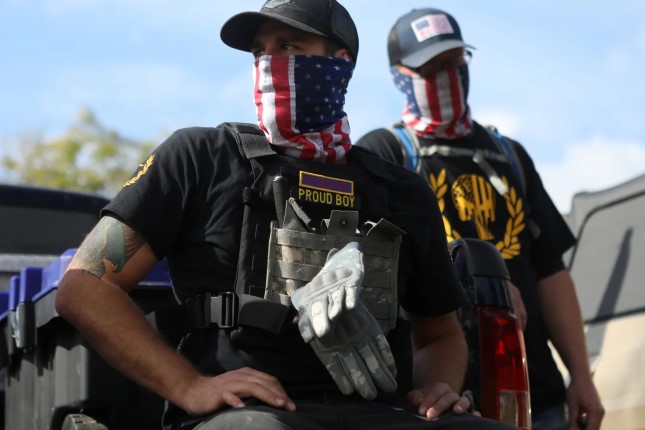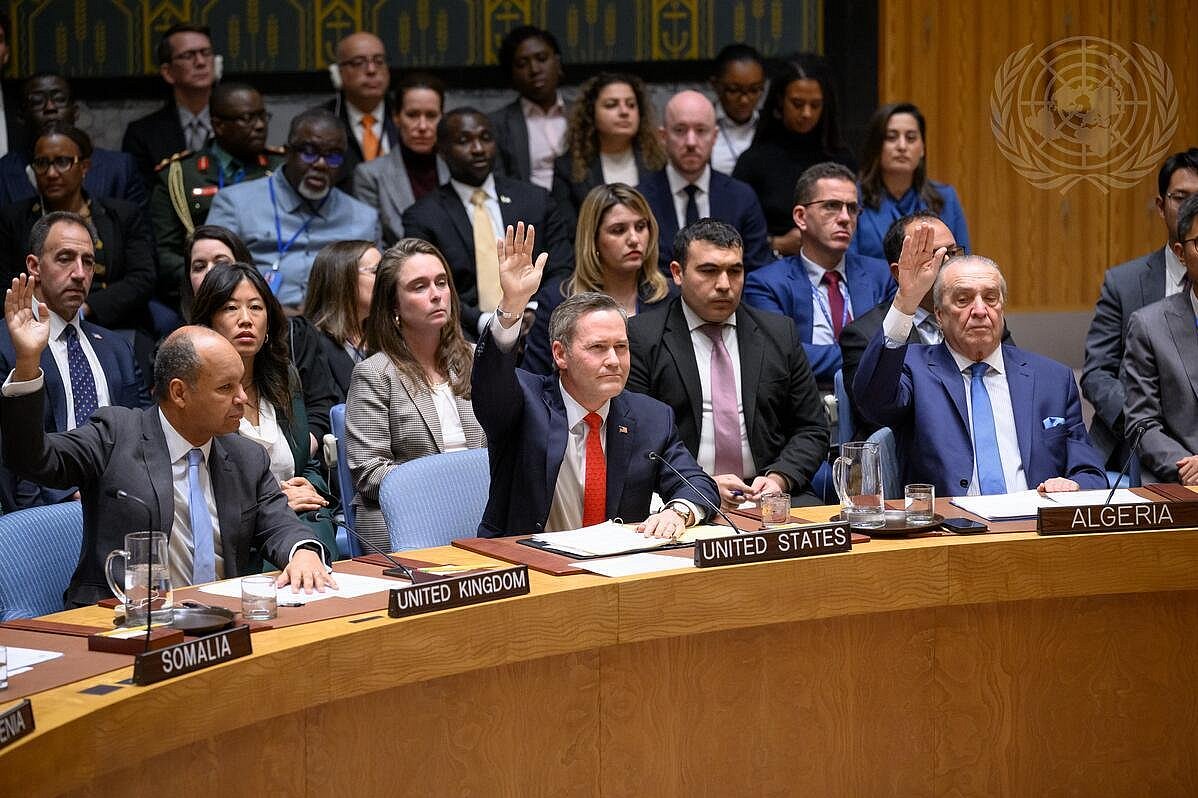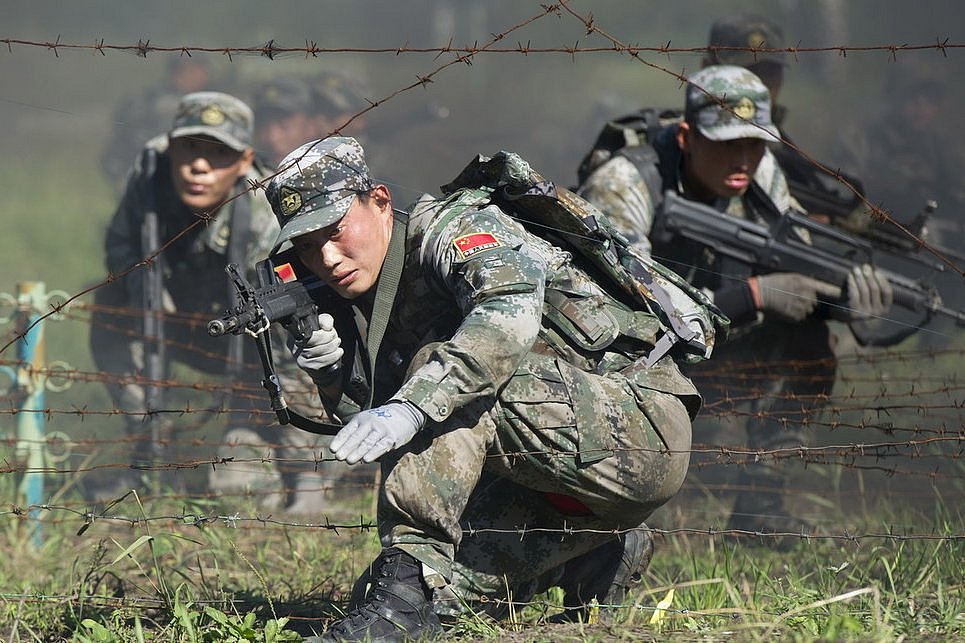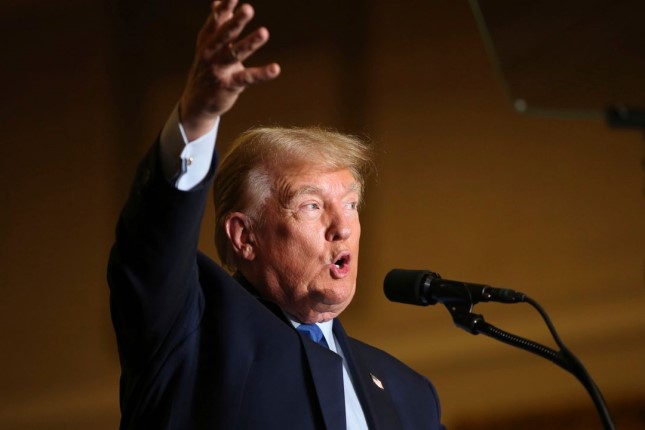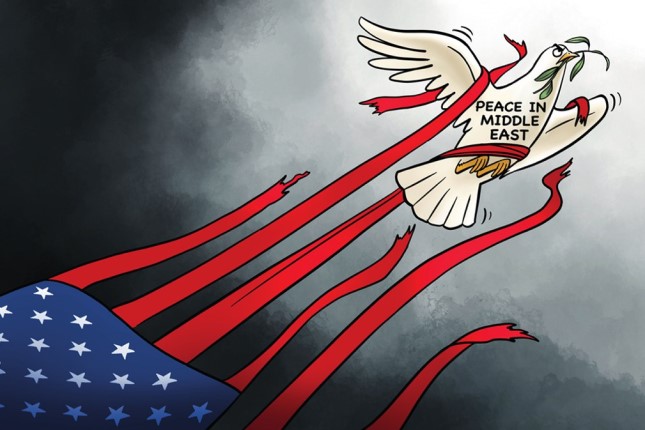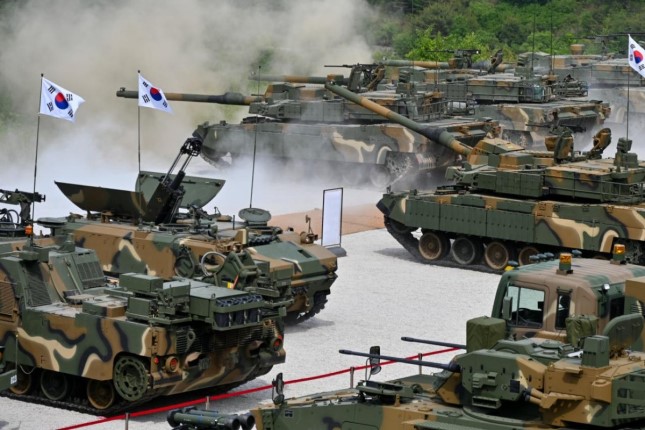In its decades-long fight against terrorism, the United States regularly criticized countries such as Iran, Pakistan, and Saudi Arabia for exporting extremist ideologies and violence. Ironically, today the United States stands accused of doing the same. The spread of homegrown American conspiracy theories, beliefs in racial superiority, antigovernment extremism, and other manifestations of hate and intolerance has become such a problem that some of the United States’ closest allies—Australia, Canada, and the United Kingdom—have designated both American groups and citizens as foreign terrorists.
Although little reported by the U.S. press, the October 2022 killing of two people at a gay bar in Bratislava, Slovakia, by a man espousing racist and homophobic views is an example of the pernicious effects of this “made in America” ideology. In a now all-too-common pattern, the gunman posted a manifesto explaining his intent just before the attack. Written in English, the document displayed all the racist, anti-Semitic, and homophobic justifications that have become de rigueur for this type of hate-filled violence. More significant, the manifesto expressed a solidarity and affinity with a U.S.-centric white supremacist ideology that has gained greater currency in both the United States and other countries in recent years. “The number of non-White invaders in America continues to grow and grow, unchecked,” the killer wrote. The gunman also cited a white supremacist terrorist attack earlier that year on a supermarket in a Black community in Buffalo, New York, as having inspired him. After decades of insufficient and ineffective efforts to suppress a racist antigovernment fringe, the United States has become the exemplar of far-right extremism and terrorism.
Far-right violence today is increasingly fueled by a deadly combination of ideology and strategy imported from the United States. The “great replacement” theory, which claims that nonwhite individuals are purposefully being brought into Western countries to undermine the political power of white voters, got its start in France, but this kind of thinking has long been a fixture of American white supremacism. These days, it is making its way into mainstream rhetoric in the United States and is acquiring an increasingly international audience. These American extremists have also adopted from Marxism the strategic goal of “accelerationism,” meaning hastening the collapse of society by fomenting chaos and bloodshed. The United States’ exportation of these two ideas is radicalizing men and women across the globe, prompting foreign governments to take steps to protect their citizens. But at base, this is an American problem, and it therefore requires American leadership to solve it.
Invasive roots
In the United States, the great replacement conspiracy theory has been supercharged over the past decade by social media and the backlash to the election of President Barack Obama. Once a fringe theory popular among white supremacists, the theory developed deeper roots in the United States as it also spread further abroad. At the same time, the far right in the United States promoted the idea that violence is needed to kick-start the collapse of U.S. institutions and society.
The great replacement theory holds that there is an ongoing diminution of white people and culture as part of a deliberate strategy by Jews and liberal elites. The theory claims that this goal is being achieved by generous immigration laws and uncontrolled illegal cross-border migration, the vigorous enfranchisement of minority groups, and the erasure or fundamental recalibration of traditional cultural norms. The French nationalist Renaud Camus popularized the theory in the early 2010s, but it in fact has deep American roots, dating back to at least the Reconstruction Era. After the Civil War, as the country integrated millions of newly freed African Americans, segments of the country’s white population adopted replacement rhetoric, citing race riots, allegations of rapes of white women by Black men, and fears that the Black population was being granted constitutional rights in order to dilute the existing white vote.
In the 1920s, the Ku Klux Klan sent delegations to the national presidential conventions of both the Democratic and Republican parties and helped the Republicans’ 1924 presidential nominee, Calvin Coolidge, win election that year. It lobbied for the infamous Immigration Act of 1924, which was designed to deter Asians, Italians, and Jews from settling in the United States. These racist views gained a renewed lease on life in the 1980s, when a succession of white supremacists embraced replacement arguments. Robert Mathews, the founder and leader of the Order, a neo-Nazi terrorist group active in 1983-84, boasted of having drunk deeply from this well of white supremacy, racism, and anti-Semitism. In a membership form distributed during the 1980s and 1990s, Richard Butler, the leader of Aryan Nations, another neo-Nazi group, similarly used replacement theory to attract new adherents to the movement. “Aliens are pouring over as a flood into each of our ancestral lands, threatening dispossession of the heritage, culture, and very life blood of our posterity,” he explained.
The United States has become the exemplar of far-right extremism
Then came the election of Obama, the country’s first African American president, which for racists provided fresh evidence that tyranny and electoral malfeasance had occurred. Meanwhile, populist movements were gaining momentum across the democratic world, in no small part in response to refugee flows stemming from wars in the Middle East and to Black Lives Matter activism in the United States. Right-wing parties won elections in the United States in 2016 and Brazil in 2022 and triumphed in the Brexit referendum in the United Kingdom in 2016. During the administration of Donald Trump, these nativist fears gained even greater currency in the United States. His campaign had repeatedly caricatured both nonwhites and non-Christians as threats to U.S. national security and indeed to Americans themselves. In 2017, after an activist was killed in Charlottesville, Virginia, after a “Unite the Right” rally in which white supremacists and neo-Nazis paraded through the University of Virginia campus with torches chanting slogans like “Jews will not replace us” and “Blood and soil,” Trump declared that there had been “very fine people on both sides.” The far right embraced the president’s statement as an endorsement, and the movement was suddenly given a new lease on life, with the most powerful supporter of all sitting in the White House.
The great replacement theory’s spread was abetted by the terrorist strategy known as accelerationism, an effort to foment cataclysmic violent chaos as a means to seize power. Karl Marx and Frederick Engels initially articulated the idea in their seminal 1848 pamphlet, The Communist Manifesto. In the United States, the term “accelerationism” first surfaced as a concept for a white supremacist revolution in the 1980s-era newsletter Siege, which was written by James Mason, a dedicated acolyte of William Luther Pierce, an even more influential white supremacist ideologue. Pierce wrote arguably the most influential book of American white supremacist literature, a 1978 call to arms titled The Turner Diaries. The novel tells the story of a 35-year-old electrical engineer named Earl Turner who joins “The Organization,” a white nationalist movement, and takes part in its two-year terrorist campaign after a predatory government attempt to seize all legally held firearms, forcing him and his “fellow patriots” underground. Among the more noteworthy moments in the book is the “Day of the Rope,” when the Organization carries out a public mass execution by hanging alleged “race traitors.” The book details a bombing of the FBI headquarters in Washington, D.C., a particularly important passage given its chilling similarity to the 1995 Oklahoma City bombing. Both of these scenes from The Turner Diaries perfectly captured the accelerationist ethos by detailing acts of violence against the government that brought on an apocalyptic race war.
Accelerationism has provided both a stunningly simple and seductively attractive ideological and strategic model for would-be terrorists. Few twenty-first-century terrorists have more emphatically embodied accelerationism and its American roots than Dylann Roof, the gunman responsible for the mass shooting at a Black church in Charleston, South Carolina, in 2015. “It is far from being too late for America or Europe,” his manifesto declared. “I believe that even if we made up only 30 percent of the population we could take it back completely. But by no means should we wait any longer to take drastic action.” John Earnest, a gunman who attacked a synagogue in Poway, California, in April 2019, was similarly inspired by a desire to accelerate a new civil war. “In case you haven’t noticed we are running out of time,” Earnest wrote. “If this revolution doesn’t happen soon, we won’t have the numbers to win it.” Indeed, echoes of The Turner Diaries and its accelerationist credo are also found in the treatises of today’s anti-government extremists. The Boogaloo movement, which attracted increasing attention during the chaotic summer of 2020, takes its name from its ambition to spark a sequel civil war. And a scaffold and hangman’s noose symbolically erected outside the U.S. Capitol on January 6, 2021, showed the “Day of the Rope” was far too close to becoming reality.
Bad example
Thanks to technology, these isolated expressions of racism, anti-Semitism, xenophobia, and homophobia can rapidly acquire a global audience and play to an international constituency. The ideology bounces across oceans through networks brought together by central marketplaces on social media. In March 2019, Brenton Tarrant, a white supremacist terrorist animated by these dangerous ideologies and strategies, murdered 51 worshipers in two mosques in Christchurch, New Zealand. He linked his choice of weapons, primarily an AR-15 assault rifle, to the impact it might have in the United States, declaring to have chosen “firearms for the affect it would have on social discourse, the extra media coverage they would provide, and the affect it could have on the politics of United states and thereby the political situation of the world.” Scrawled across the stock of his semi-automatic weapons were several key terms from the history of far-right violence, including references to the “14 words,” a credo of U.S. origin extolling the importance of protecting the white race for future generations. Tarrant was also an outspoken proponent of accelerationist doctrine, proudly declaring, “True change and the change we need to enact only arises in the great crucible of crisis.”
The dark shadow of the January 6 assault on the U.S. Capitol has also inspired others similarly seeking to disrupt the peaceful transfer of power in their countries. Earlier this year in Brazil, a mob motivated by grievances similar to those of the Trump supporters in Washington sought to emulate the January 2021 rioters by storming their capital city’s government center in hopes of overturning an election outcome. Their preferred candidate, Jair Bolsonaro, watched the events unfold on television from his self-imposed exile in Florida. The United States’ stature as a pillar and exemplar of democracy had been overtaken by the Trump administration’s election denialism playbook. Bolsonaro’s supporters even sought guidance and advice from senior former White House officials, including the former senior Trump adviser Steve Bannon.
“We have become exporters of right-wing extremism, damaging one of our best weapons in securing our international standing—our example,” the terrorism expert Matthew Levitt wrote after January 6, 2021. And such violence has profound implications for the United States’ place in the world: it contributes to the United States’ being viewed as weak, divided, and vulnerable. It also diverts American resources and energy to healing divisions at home rather than to confidently engaging the world on key issues such as climate change, pandemic prevention, and protecting the international order.
Knowing this, adversaries of the United States have exploited this vulnerability in their own influence and information operations. Russia, for instance, has supported neo-Nazi groups such as the Russian Imperial Movement, which was designated a global terrorist group by the Trump administration in 2020. The group maintains an open symbiotic relationship with the Russian government and American and European officials believe it carried out a letter bomb campaign in Spain toward the end of 2022. Iran has also taken steps to encourage far-right terrorism in the West. In December 2020, FBI Director Christopher Wray and at least 11 other senior U.S. officials were put on an online hit list targeting U.S. government officials who publicly backed the integrity of the 2020 election results. They were deemed “Enemies of the People,” and their home addresses and other personal information were shared. Later that month, the FBI announced that it had linked Iran to the site.
Iran has taken steps to encourage far-right terrorism in the West
As right-wing extremism spreads, partners of the United States have taken steps to try to stop it. The Canadian government, for instance, has designated one of the groups involved in the January 6 attack, the Proud Boys, as a terrorist entity, noting, “The group and its members have openly encouraged, planned, and conducted violent activities against those they perceive to be opposed to their ideology and political beliefs.” The United States’ closest ally now singles out American groups and individuals as threats to their country the same way the United States has targeted entities with ties to al Qaeda and the Islamic State. Canada has also designated other U.S.-based neo-Nazi movements as terrorist entities, including Atomwaffen and the Base as well as Mason, the American author of Siege.
Because today’s right-wing extremism is first and foremost an American problem, solving it will depend on American leadership. To start, the White House should direct the State Department to designate foreign neo-Nazi and white supremacist groups as foreign terrorist organizations. Of the 73 such groups on the State Department’s current list, no relevant neo-Nazi or white supremacist groups are included. This is especially surprising because the most recent National Strategy for Counterterrorism, released in October 2018, named two violent far-right extremist organizations: the Nordic Resistance Movement in Scandinavian countries and the National Action group in the United Kingdom.
Congress should also consider passing a domestic terrorism law to formally criminalize plots and violence targeting individuals on the basis of race, ethnicity, religion, national identity, sexuality, gender, political affiliation, and other protected categories. Today, violent American extremists cannot be charged for providing material in support of patently violent domestic groups or for plotting acts which are otherwise classified as terrorist attacks when a foreign terrorist entity is involved. This omission in the law reinforces a perception that foreign terrorists, often only distinguishable by skin color or religion, are treated more harshly by the judicial system than domestic terrorists. The absence of domestic terrorism laws has also led to an inequity in sentencing depending on whether the crimes were committed on behalf of a designated foreign terrorist organization or a domestic violent extremist group.
Providing the U.S. Department of Justice with the ability to designate violent extremist groups and individuals as domestic terrorists is both controversial and challenging. Critics of this proposal have argued that the designation of domestic violent extremist groups as terrorist organizations would inevitably become dangerously politicized and partisan. Those fearing overbearing legal remedies should remember that in 1870, President Ulysses S. Grant created the Department of Justice specifically to counter the terrorism being carried out by the Ku Klux Klan and other violent groups that were active in Southern states. But a new domestic terrorism law seems a small step by comparison, and it would send a resounding message: there is no place for political violence in a democracy.
Photo: Members of the Proud Boys at a rally in Portland, Oregon, September 2020 © Jim Urquhart / Reuters.
Source: Foreign Affairs.
